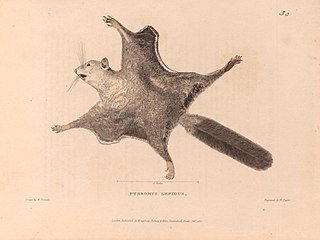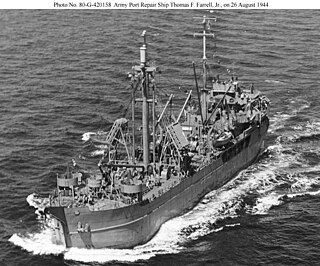
Sagitta is a dim but distinctive constellation in the northern sky. Its name is Latin for 'arrow', not to be confused with the significantly larger constellation Sagittarius 'the archer'. It was included among the 48 constellations listed by the 2nd-century astronomer Ptolemy, and it remains one of the 88 modern constellations defined by the International Astronomical Union. Although it dates to antiquity, Sagitta has no star brighter than 3rd magnitude and has the third-smallest area of any constellation.

The Chaetognatha or chaetognaths are a phylum of predatory marine worms that are a major component of plankton worldwide. Commonly known as arrow worms, about 20% of the known Chaetognatha species are benthic, and can attach to algae and rocks. They are found in all marine waters, from surface tropical waters and shallow tide pools to the deep sea and polar regions. Most chaetognaths are transparent and are torpedo shaped, but some deep-sea species are orange. They range in size from 2 to 120 millimetres.

The versine or versed sine is a trigonometric function found in some of the earliest trigonometric tables. The versine of an angle is 1 minus its cosine.

John Henry Mackay was a Scottish-German egoist anarchist, thinker and writer. Born in Scotland and raised in Germany, Mackay was the author of Die Anarchisten and Der Freiheitsucher.

The apothem of a regular polygon is a line segment from the center to the midpoint of one of its sides. Equivalently, it is the line drawn from the center of the polygon that is perpendicular to one of its sides. The word "apothem" can also refer to the length of that line segment and come from the ancient Greek ἀπόθεμα, made of ἀπό and θέμα, indicating a generic line written down. Regular polygons are the only polygons that have apothems. Because of this, all the apothems in a polygon will be congruent.

The northern three-toed jerboa is a species of rodent in the family Dipodidae. It is the only extant species within the genus Dipus. It ranges across Iran, Uzbekistan, Turkmenistan, Kazakhstan, Russia, China and Mongolia. A common species, the International Union for Conservation of Nature rates it as being of "least concern".

The arrow flying squirrel is a species of flying squirrel. It is endemic to Java and Bangka, Indonesia. The population is unknown as it has only been collected from a few localities. It is nocturnal and arboreal and may be found in primary and secondary forest. It is threatened by forest loss due to logging and agriculture and there are no known conservation actions.

Sagitta (AK-87) was never commissioned and thus never bore the USS designation.
Congoglanis alula is a species of loach catfish found in the Congo River Basin in Angola, the Democratic Republic of Congo and possibly in Zambia. It reaches lengths up to 14.1 centimetres (5.6 in) SL.

The arrow dragonet, also known as the arrow-headed darter dragonet, is a species of dragonet widespread in the Indo-West Pacific from Arabian Peninsula to the Philippines. Occurs in the Mekong delta of Viet Nam and probably also in Cambodia. This species grows to a length of 11 centimetres (4.3 in) TL. The arrow dragonet is a demersal species, which occurs on sandy substrates along coastlines, in estuaries, and in the lower courses of rivers where it feeds on worms, zooplankton and phytoplankton.

The N.V. Vliegtuigbouw 013 Sagitta is a Dutch mid-wing, single-seat Standard Class glider designed by Piet Alsema and produced by N.V. Vliegtuigbouw.
According to traditional Chinese uranography, the modern constellation Sagitta is located within the northern quadrant of the sky, which is symbolized as the Black Tortoise of the North.
The arrow darter is a species of freshwater ray-finned fish, a darter from the subfamily Etheostomatinae, part of the family Percidae, which also contains the perches, ruffes and pikeperches. It is found in parts of Kentucky and Tennessee, particularly in the Cumberland and Kentucky Rivers. These small fish are part of the perch family. They grow to be about 4.5 inches in length. Their opercle, breast, and cheek are all unscaled. They have a vertical black bar at the base of their caudal fin. Six to nine vertical banded bars run down the side of the fish. The dorsal side of the fish is olive green in color, and the ventral side is a yellow to white pattern. The first dorsal fin has a black base, followed by green color, and then a reddish-orange end. The second dorsal is clear with two rows of laterally lined orange spots. The caudal fin is clear and has two-three vertical lines of orange spots. The anal fin has a green base and then clear at the end. The breeding male has bright orange-red spots and breeding tubercles present on the scales.
Congoglanis is a genus of loach catfishes found in the Congo River system of Africa. This genus is considered the sister group of all other species in the subfamily Doumeinae.

Dugesia sagitta is a species of dugesiid triclad that inhabits the rivers of Corfu, Greece. The specimens of this species are up to 10 millimetres (0.39 in) long and 3 millimetres (0.12 in) wide.

The Walter Sagitta was a Czechoslovakian, air-cooled, inverted V-12 engine that first ran in 1937. This was one of several smaller, low-mass medium power pre-war V-12 engines produced. With a displacement of 18.4 liters, it produced up to 373 kW at 2,500 rpm.
Congoglanis howesi is a species of catfish in the genus Congoglanis. It lives in the Luachimo River in Angola. Its length reaches 11.3 cm. It is named after ichthyologist Gordon J. Howes.
Congoglanis inga is a species of catfish in the genus Congoglanis. It lives in the Congo River near the Inga I Dam in the Democratic Republic of the Congo. Its length reaches 11.1 cm.

11 Sagittae is a star in the constellation Sagitta. It is a blue giant with a spectral classification of B9III and has evolved off the main sequence. The star will enter the Hertzsprung gap soon.












